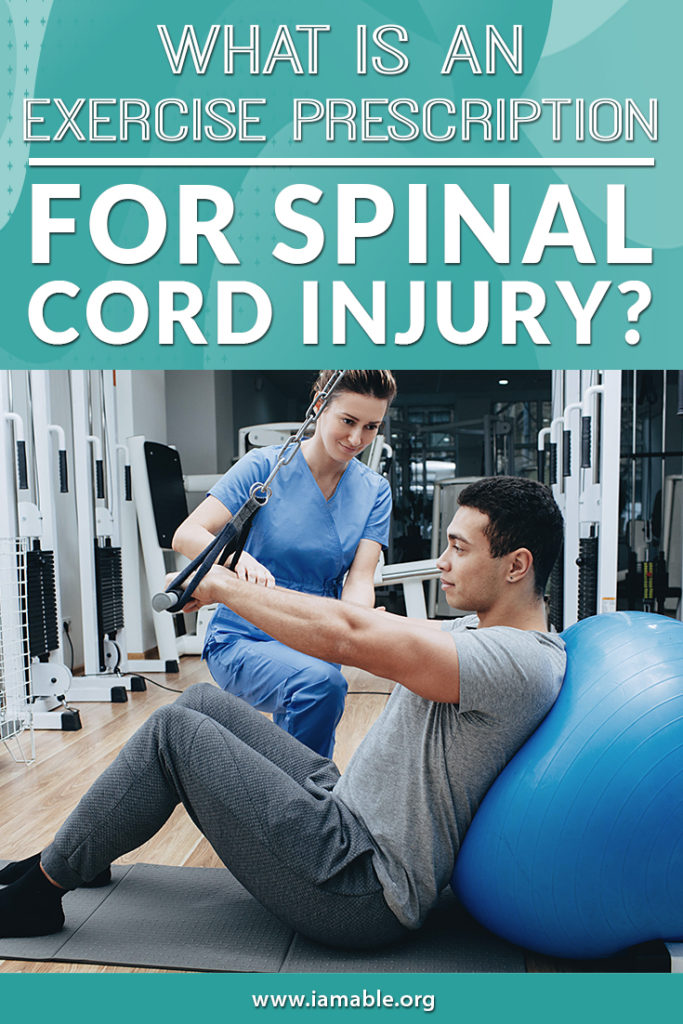Miami, FL 33186

An exercise prescription for spinal cord injury could be just what you need to set yourself on the path to recovery. However, this is not the only situation that calls for an exercise prescription. Such a treatment method helps patients with everything from asthma and heart disease to decreased bone density and diabetes. Let’s take a closer look at what an exercise prescription actually is, what the main components are, and how it can assist with SCI therapy.
Doctors give out prescriptions for medications that can help people. Exercise prescriptions work on a similar principle. A healthcare practitioner or a professional trainer sets up a plan for exercises that will help a patient with their particular health challenges.
The prescription, of course, will find its basis in the nature of the health problems. Therefore, when it comes to spinal cord injuries, the exercises will deal with the challenges that a patient is facing on a case by case basis. This is vital because SCI patients can have varying degrees of paralysis and other health concerns. The idea is to develop an exercise prescription that is unique to you, your needs, and your goals.
A personalized exercise prescription will get you the best results and encourage you to stick to the routine. But what are the components of an exercise prescription? Let’s take a closer look at this critical SCI recovery tool.
First, let’s examine the types of physical activity that may become a part of your exercise prescription.
You can expect an exercise prescription to make use of every one of these types of activity that it is possible for the patient to perform. Now let’s consider the vital components of an exercise prescription routine.
The acronym FITT can help you to remember the four components of an exercise routine: frequency, intensity, time, and type. Let’s examine these four factors in more detail.
When taking these principles into account, what may an exercise prescription for spinal cord injury look like? Here is an example.
Again, every exercise prescription is custom designed to include the goals and limitations of the patient, so your final result may look very different from this sample. However, this will give you an idea of what an exercise prescription for spinal cord injury may look like.
The critical factors with SCI recovery are consistency, a proper blend of proven therapies, and determination despite progress that may seem slow at times. Improvement goals may include activating a single muscle rather than jumping out of bed and running a mile, so you have to be patient with yourself and your exercise prescription. However, if you find that your routine is becoming too easy, it may be time to enhance the prescription to meet your improved health levels. This makes reviewing your exercise prescription periodically another component of the recovery process.
How can you get yourself mentally prepared for a challenging exercise prescription for spinal cord injury? iAM ABLE in southern Florida has just the thing for you.
When preparing to go through a long-term recovery process, it is essential to get yourself ready mentally. One way we are helping SCI survivors to do that is with our eBook: 7 Unbelievably Important Steps to Take to Thrive after Paralysis. The purpose of the book is to help you take control of your new circumstances so as to maximize your potential outcome.
At iAM ABLE, we believe that activity-based therapy can help you to bridge the gap between traditional treatment and your recovery goals. To learn more, read our eBook and call our recovery facility at 305.283.9717 today.
Grab our free e-book 7 Unbelievably Important Steps to Take to THRIVE after Paralysis by clicking the image below.
